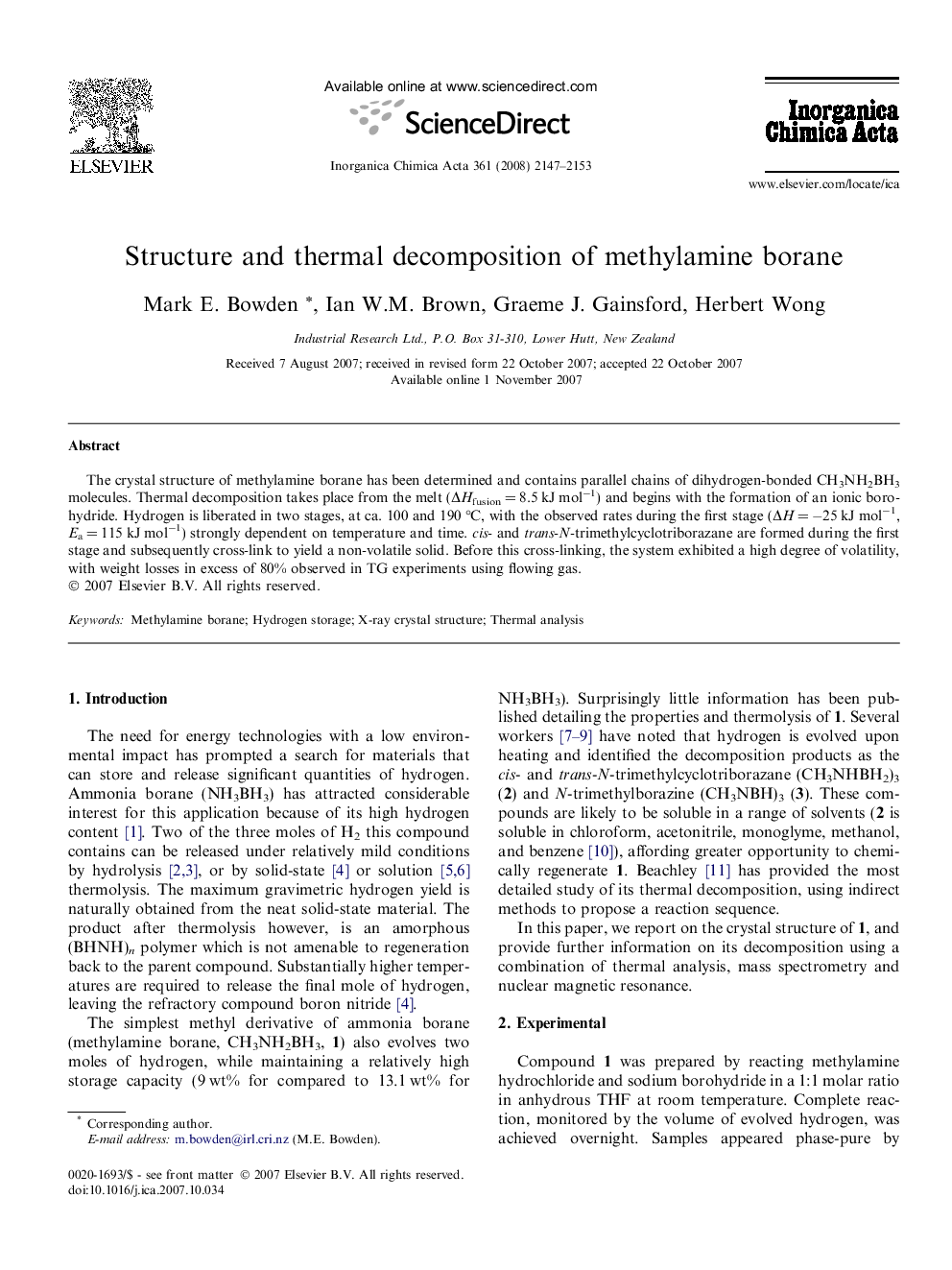| Article ID | Journal | Published Year | Pages | File Type |
|---|---|---|---|---|
| 1307266 | Inorganica Chimica Acta | 2008 | 7 Pages |
The crystal structure of methylamine borane has been determined and contains parallel chains of dihydrogen-bonded CH3NH2BH3 molecules. Thermal decomposition takes place from the melt (ΔHfusion = 8.5 kJ mol−1) and begins with the formation of an ionic borohydride. Hydrogen is liberated in two stages, at ca. 100 and 190 °C, with the observed rates during the first stage (ΔH = −25 kJ mol−1, Ea = 115 kJ mol−1) strongly dependent on temperature and time. cis- and trans-N-trimethylcyclotriborazane are formed during the first stage and subsequently cross-link to yield a non-volatile solid. Before this cross-linking, the system exhibited a high degree of volatility, with weight losses in excess of 80% observed in TG experiments using flowing gas.
Graphical abstractCrystalline methylamine borane contains parallel chains of dihydrogen-bonded CH3NH2BH3 molecules. Generation of hydrogen gas takes place from the melt above 80 °C, and involves the formation of an ionic borohydride intermediate. Volatile borazane rings are formed which subsequently cross-link to form a non-volatile residue.Figure optionsDownload full-size imageDownload as PowerPoint slide
